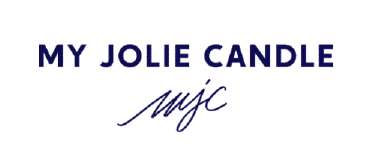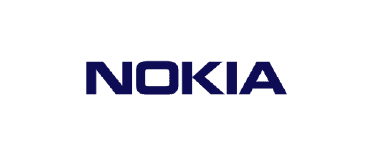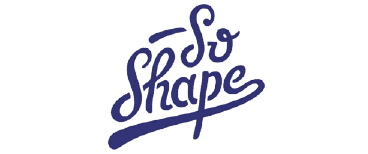In today's ever-changing marketing landscape, customer acquisition is essential to the success of any business. This is where the use of an effective acquisition tunnel becomes a key element of your marketing strategy. The acquisition tunnel, also known as the conversion funnel, represents the path followed by a potential visitor from their first interaction with your brand to the final purchase.
The importance of a well-structured acquisition tunnel lies in its ability to guide visitors through the buying process, converting them into regular customers. By using tactics such as lead generation, visitor behavior tracking and content personalization, you can optimize your acquisition tunnel to maximize conversions and build customer loyalty.
Whether you use e-mail marketing, social media, SEO or other marketing channels, a well-designed acquisition tunnel enables you to capture visitors' attention, interest them in your offer and turn them into satisfied customers. Don't overlook the importance of acquisition in your marketing strategy, and take the time to optimize your acquisition tunnel for the best possible results.
Why the acquisition tunnel is important in marketing
The acquisition tunnel is a visual representation of the different stages visitors follow from their first interaction with your brand through to purchase. These stages may vary according to your industry and business model, but they generally include awareness, interest, prospecting, conversion and retention.
Each stage of the acquisition tunnel has a specific objective and requires adapted strategies. Understanding these stages is essential to setting up an effective acquisition tunnel.
The stages of the acquisition tunnel
The acquisition tunnel plays a crucial role in your marketing strategy for several reasons. Firstly, it enables you to focus your efforts on those most likely to become customers. By identifying the key stages of the acquisition tunnel, you can adjust your strategy to meet the needs and preferences of your target audience.
What's more, a well-designed acquisition tunnel enables you to maximize your return on investment by optimizing every stage of the acquisition process. By using tactics such as content personalization and visitor behavior tracking, you can improve the efficiency of your acquisition tunnel and increase your chances of conversion.
Finally, an effective acquisition tunnel enables you to retain your existing customers. By using retention tactics such as selling high-quality products and creating an exceptional customer experience, you can encourage your customers to return and become ambassadors for your brand.
The acquisition tunnel is made up of several key stages, each playing an important role in the acquisition process. Understanding these stages will enable you to optimize your acquisition tunnel for best results.
Awareness-raising in the acquisition tunnel
The first stage of the acquisition tunnel is awareness. At this stage, your aim is to attract visitors' attention and build awareness of your brand. You can use tactics such as e-mail marketing, paid advertising and SEO to drive traffic to your website.
It's essential to offer attractive, high-quality content to pique visitors' interest and encourage them to find out more about your brand. Personalizing content according to visitors' preferences and interests can also be effective in increasing engagement.
Capturing interest in the acquisition tunnel
Once you've grabbed visitors' attention, the next step is to capture their interest. At this stage, you need to provide relevant and useful information about your product or service to convince visitors to continue their buying journey.
You can use tactics such as creating educational content, sharing case studies and demonstrating the value of your offering to convince visitors of the value of your product or service.
Nurturing prospects in the acquisition tunnel
Once you've captured visitors' interest, it's important to nurture them to convert them into qualified leads. At this stage, you can use tactics such as e-mail marketing, webinars and automated sequences to stay in touch with prospects and guide them through the buying process.
The aim of lead nurturing is to create a relationship of trust with visitors and help them make an informed decision. By providing valuable content and answering their questions and concerns, you can speed up the buying process and increase your chances of conversion.
Convert prospects into customers in the acquisition tunnel
Conversion is the key stage in the acquisition tunnel, where prospects become customers. At this stage, you need to facilitate the buying process by eliminating potential obstacles and offering a smooth, user-friendly shopping experience.
You can use tactics such as promotional offers, customer testimonials and satisfaction guarantees to entice prospects to make the purchase. It's also important to facilitate the checkout process and provide high-quality customer support to ensure customer satisfaction.
Retain existing customers in the acquisition tunnel and sell them high-quality products
Once you've converted prospects into customers, it's essential to retain them and encourage them to buy high-quality products. Customer loyalty is essential to the long-term profitability of your business.
You can use tactics such as loyalty programs, exclusive offers and reactivation campaigns to encourage customers to return and buy again. By offering excellent customer service and providing high-quality products, you can create a base of loyal customers who will recommend your brand to others.
Key indicators for measuring success in the acquisition tunnel
To measure the success of your acquisition tunnel, it's important to track and analyze key performance indicators (KPIs). These KPIs enable you to understand how your acquisition tunnel is performing and identify areas for improvement.
Some important KPIs to monitor include conversion rate, cost per acquisition, bounce rate, e-mail open rate and customer retention rate. By analyzing these KPIs on a regular basis, you can adjust your acquisition strategy to achieve better results.
When optimizing your acquisition tunnel, it's important to measure and analyze the results to assess its effectiveness. Here are a few key indicators to keep an eye on:
- Conversion rate Conversion rate: measures the percentage of visitors who go on to the next stage of the sales tunnel. A high conversion rate indicates good tunnel optimization.
- Customer acquisition cost (CAC) Calculate the average cost of acquiring a new customer. If your CAC is too high, this may indicate problems in your acquisition tunnel.
- Customer Lifetime Value (CLV) Customer Lifetime Value (CLV): determines how much value a customer brings to your company over a period of time. If your CLV is high, it means you're succeeding in retaining your customers.
- Churn rate Keep an eye on how many customers unsubscribe from your list or cancel their subscription. A high churn rate may indicate customer satisfaction problems.
By analyzing these indicators and making the necessary adjustments, you can continuously improve the performance of your acquisition tunnel.
















